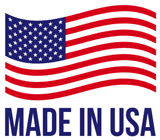
Table of Contents
Generated by bonding carbon and fluorine, PFAS is among the strongest bonds ever known in organic chemistry. Referring to a ground of artificially-made chemicals that possess PFOS, PFOA, and others, per-, and polyfluoroalkyl substances or PFAS are produced and used in different industries all over the globe.
The resulting substance allows the production of everyday items such as kitchenware, carpets, and food packaging to become resistant to stains, moisture, and heat. One of the most used PFAS chemicals is perfluorooctanoic acid and perfluorooctanesulfonic or PFOS.
Coined as the “forever chemical,” these chemicals have long half-lives and are highly persistent in the human body and the environment. As a result, there have been PFAS chemicals that are regulated and ceased production in the United States. However, few industries are still able to generate them internationally.
Moreover, these artificial compounds have easily found their way into our system through the items included in our daily consumption. These include sources of water due to their use in firefighting foams and industrial products. Considering they are difficult to separate in the drinking water treatment process, this has been tied to concerning health effects.
The United States EPA has not regulated any strict limits on the amount of PFAS that drinking water can contain. But in place of federal action, several states have had the prerogative to issue strict limits on public drinking water.
Consumer Reports on Bottled Waters
Recently, Consumer Report tested 47 different bottled water brands, 35 of which were non-carbonated and 12 were carbonated ones. For each product, CR has tested two to four samples. The conducted tests focused on heavy metals such as cadmium, arsenic, mercury, and lead. But they also gave attention to additional 30 PFAS chemicals.
As per non-carbonated waters, the CR had detected considerable levels of PFAS, but only two of the products exceeded 1 part per trillion. These products were Tourmaline Spring and Deer Park.
Consumer Report also reported that all the non-carbonated water products were found to have heavy metal content that is just below the safety limit with the exception of Starkey Spring Water. The product tested positive for arsenic, with levels just below the federal limit of 10 parts per billion. Moreover, they have exceeded more than three times more than CR’s suggested level of 3 parts per billion.
In all the tests conducted by CR, all products resulted in having levels below the recommended limit and none of them possessed arsenic levels above CR’s suggested maximum of 3 parts per billion. However, several products still hold detectable amounts of PFAS.
Experts say that there are a few possible reasons. The PFAS Project Lab at Northeastern University in Boston says that the carbonation process possibly has a hand in it. Additionally, the source of water could potentially have more PFAS.
Consumer Report’s Director of Food Policy Brian Ronholm, says that PFAS in carbonated water should incite a sense of awareness for the federal government to make guidelines. He suggested that they impose science-based limitations for industries and manufacturers concerning tap and bottled drinking waters.
EWG Laboratory Tests on Drinking Water
In January 2020, EWG has commissioned laboratory tests on drinking water in dozens of United States cities and metropolitan areas. Results reveal that the exposure of Americans has been significantly overlooked by previous research studies. It includes both EWG’s research studies and Environmental Protection Agency.
The tests and academic research shows that PFAS has been found prominently in not only rainwater but also in all major water reservoirs in the United States. EWG tests also found chemicals that are not usually tested for in the water.
By obtaining water samples in 44 places across 31 states, it was found that only Columbia tested negative for PFAS, and only two other locations that had below the level of PFAS limits.
Some of the concerning PFAS level results were found in big metropolitan areas such as Philadelphia and New York City. In the places where the test was conducted, the contamination has not been publicly disclosed by the EPA.
Because PFAS is not regulated by the federal government, utilities have ended up testing their products on their own. But the downside of independent testing is that they are not mandated to make their results public. Because of this, their reports may or may not directly reach the concerns of the EPA or drinking water agencies.
Among all the samples collected, the only specimen with no detectable PFAS was from Meridian, since they draw their drinking water from deep wells that are more than 700 feet below the ground.
On average, the samples that reveal detectable levels of PFAS contained six different compounds. One of them had up to 13 various PFAS at different concentrations.
Risks Of These “Forever Chemicals”
Once released into the environment, PFAS chemicals do not break down. These substances can also build up and accumulate in the blood and our organs. Individuals exposed to PFAS are linked to having higher risks of cancer.
Pregnant women are also found to be among the most at risk of the dangers of exposure to PFAS. Pregnancy complications can include underdevelopment of the fetus, infertility, complications in the umbilical cord. Studies also found that PFAS exposure can also slant the effectiveness of vaccines.
Children at younger ages also have higher risks of exposure to the chemicals since they spend most of their time on the floor in their early stages. Cleaning products and carpets are among their frequently habited spaces. For everyone, the chances of exposing oneself to PFAS are relatively high, considering the chemical has easily found its way to almost every consumer product.
Should You Be Worried?
It is best to consider that tests on bottled waters and drinking waters are mostly conducted independently, and they are not mandated and regulated by law. Cautious and safe practices should still be observed to keep individuals and families safe.
If you want to make sure whether your bottled water is safe from high amounts of PFAS, you can double-check and see independently tested samples to see if your bottled water is safe for daily use and consumption.
There are also other ways to make sure that you’re drinking water is free from any harmful substances. Invest in a whole house water filter today and discover all the great benefits it can give you and your family. See more here https://www.aquaoxwaterfilters.com/whole-house-water-filter/.






